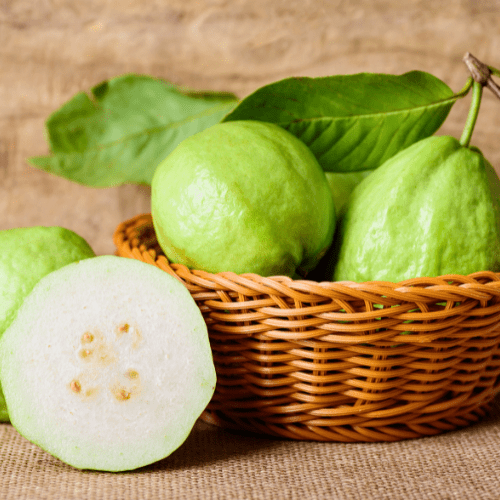Position
Being a tropical plant, it thrives in high humidity. Regular rainfall or consistent watering is essential to keep the tree healthy.
Wax Apple trees require full sun to grow and produce fruit. Ensure they are planted in a location with at least 6-8 hours of direct sunlight daily.
Plant at the same depth as in the nursery bag, and water thoroughly after planting.
If planting multiple trees, space them at least 3-5 meters apart, as the tree can spread quite wide.
Soil
Wax Apple trees prefer well-draining, slightly acidic soils with a pH of 5.5 to 6.5. Add at least one bag of acid compost or Lithuanian sphagnum peat moss to your soil. Although the tree is adaptable to various soil types, it does best in rich, fertile soil that retains moisture but doesn’t become waterlogged.
Watering
Wax Apple trees need regular watering, especially in the dry season. Once established, they are somewhat drought-tolerant, but they perform best when kept consistently moist.
Ensure good drainage in the soil to avoid waterlogging. Too much water can lead to root rot.
During the fruiting season, maintain an even level of moisture to help with fruit development and prevent the fruit from becoming too watery or shriveled.
Mulch
Apply organic mulch to your tree all year round.
Use 2 to 5 centimetres of pine bark mulch to protect the roots from UV damage and drying out. The mulch retains moisture and maintains an optimal pH. Do not let the mulch touch the plant stem, as it may cause infection or rot.
Re-apply every 3-4 months.
Fertilising
Apply our slow-release all-plant fertiliser. Apply one teaspoon every 4-5 months. The roots will absorb what they need.
Alternatively, apply a balanced fertiliser such as 10-10-10 in early spring before new growth begins. Thereafter, fertilise annually in early spring.
Pruning
Wax Apple trees do not require extensive pruning but can benefit from it to maintain a manageable shape and encourage better fruiting.
Prune dead or diseased wood and any branches that cross over each other to improve airflow and sunlight penetration within the canopy.
Regular pruning can also keep the tree more compact, making harvesting easier.
Pests and Diseases
Wax Apple trees are susceptible to pests like aphids, scale insects, and whiteflies. These pests can be controlled with organic insecticides or by encouraging natural predators like ladybugs.
They can also be affected by powdery mildew, rust, and other fungal diseases, especially in humid conditions—preventive measures like pruning for airflow and avoiding overhead watering.
Treat promptly or preferably use preventative measures by spraying with agricultural Neem Oil or Effective Microorganisms (EM Control)
Harvesting
Wax Apples are ready to harvest when the fruit is fully coloured, deep red, and firm to the touch. When ripe, the fruit should have a shiny, waxy appearance.
Gently twist or cut the fruit from the tree, not damaging the skin or the tree. If left on the tree for too long, the fruit may soften and begin to spoil.






